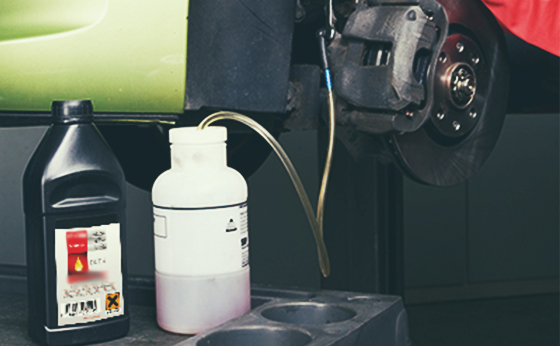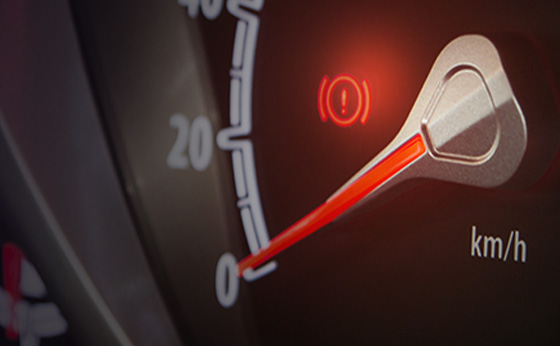The experience known as ‘brake judder’ is the vibration felt through the steering wheel and suspension system when the brakes are applied at certain speeds and pressures. It varies from a barely noticeable vibration, to a violent judder through the steering wheel or brakes.
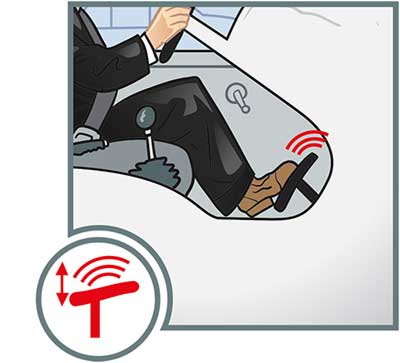
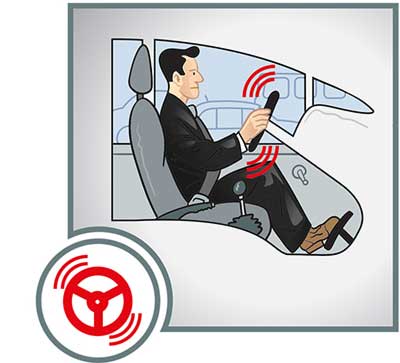
Brake judder causes and solutions
Cause A: Hub and/or disc run-out
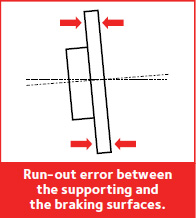
Juddering can be caused by an incorrectly fitted disc pulling out of alignment with the hub or caliper. Here’s how to check whether this run-out error is the case:
- Look for rust or dirt on the wheel hub surface, which can cause poor contact and lead to juddering.
THE SOLUTION: Dismantle the disc and clean both surfaces to remove rust and other pollutants. - Look for excessively tightened positioning screws, which can cause distortion of the hub contact surface and lead to vibrations on brake application.
THE SOLUTION: Replace the discs and make sure the tightening torque isn’t overly severe. - Look for distortion of the hub itself, as it is possible for hubs to warp. Bolting a disc to a warped hub will lead to brake judder when braking.
THE SOLUTION: Once you’ve fitted the discs, check for disc run-out using a dial gauge. If the run-out is out of tolerance, re-fit the disc in a different position until the run-out is within tolerance. If it’s impossible, then hub maintenance is required. - Look to see whether there are poorly fitted alloy wheels. A common cause of disc run-out in recent years has been the incorrect fitment of ‘one-size-fits-all’ alloy wheels. Installers sometimes use location spacers on the wheel spigots, and these can get lost or damaged.
THE SOLUTION: Place the run-out gauge on the back of the disc while fitting the wheel, and measure the run-out. The gauge will only show run-out once the wheel is fitted and tightened, and it might be necessary to change the wheel.
Cause B: Severe disc overheating and distortion
Any major temperature increases can cause the disc metal to distort in different areas. These ‘hot spots’ cause intermittent contact between the pad and disc that results in brake judder. Here’s how to check whether this is the case:
- Look for any signs of brake abuse, which is a common reason for overheating. Discs are designed to cool quickly between applications, but when braking in quick succession (eg. during alpine driving), the discs doesn’t get a chance to cool down. You are looking for blue spots on the disc surface, which are a good indication of overheating.
THE SOLUTION: Discs with blue/darker spots cannot recover and should always be replaced, along with the brake pads. - Look for poor quality brake pads, which can overheat easily. Excessive heat from poor quality brake pads during heavy braking can cause discs to overheat and warp.
THE SOLUTION: Again, look for blue spots on the disc surface. Tell the driver about the risks of poor quality pads and always replace pads and discs if you see any blue/dark spot areas.
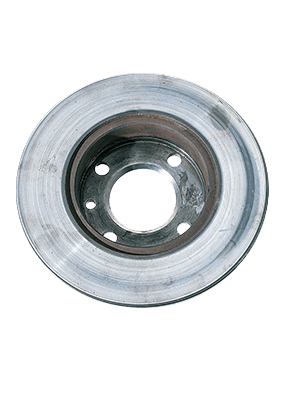
Cause C: Disc thickness variation (DTV)
Uneven thickness and brake disc deformation are known as ‘DTV’. For effective braking, the brake disc needs to have uniform thickness throughout. If there’s an uneven friction surface, the brake pad will lose and regain contact with the disc(s) as it turns around. That’s what causes brake judder. Here’s how to check whether this is the case:
- Ask the driver if the brakes have been properly bedded in. By following the correct bedding in procedure and only applying moderate pressure during the first few applications, an even layer of friction material is transferred from the pads to the disc. ‘Mating’ the surfaces in this way improves safety and helps to avoid brake judder.
THE SOLUTION: Prevention is better than cure. Every time you fit new brakes, speak to the driver about bedding in. It’s recommended to avoid hard braking for the first 200 km. When poor bedding in has resulted in DTV, you can try bedding in again (with even, moderate braking). If this doesn’t realign the surfaces, then the pads and discs will have to be replaced. - Look out for caliper seizure. A seized caliper piston or sliding pin leads to uneven forces being applied to each side of the brake disc and uneven wear or DTV.
THE SOLUTION: This problem is usually caused by dirt or corrosion, so maintain the seized caliper to prevent the issue from reoccurring and replace both the pads and discs. - Look for corrosion or dirt on the disc surface, which may indicate poor quality disc pads. Uneven deposits of friction material can change the disc’s thickness and parallelism.
THE SOLUTION: It may be a sufficient brake judder fix to remove the deposits with a brush or sandpaper. Then, road test the brakes and if it hasn’t realigned the surfaces, the only solution is to replace the pads and discs. - Look for pad imprints on the discs, which may be been caused by the brake pedal being depressed when the pads are hot. This will often be visible as the outline of the brake pad on the disc surface, where the material has welded on.
THE SOLUTION: It’s normally enough just to remove the pad imprint with a brush or sandpaper.
The content contained in this article is for entertainment and informational purposes only and should not be used in lieu of seeking professional advice from a certified technician or mechanic. We encourage you to consult with a certified technician or mechanic if you have specific questions or concerns relating to any of the topics covered herein. Under no circumstances will we be liable for any loss or damage caused by your reliance on any content.

